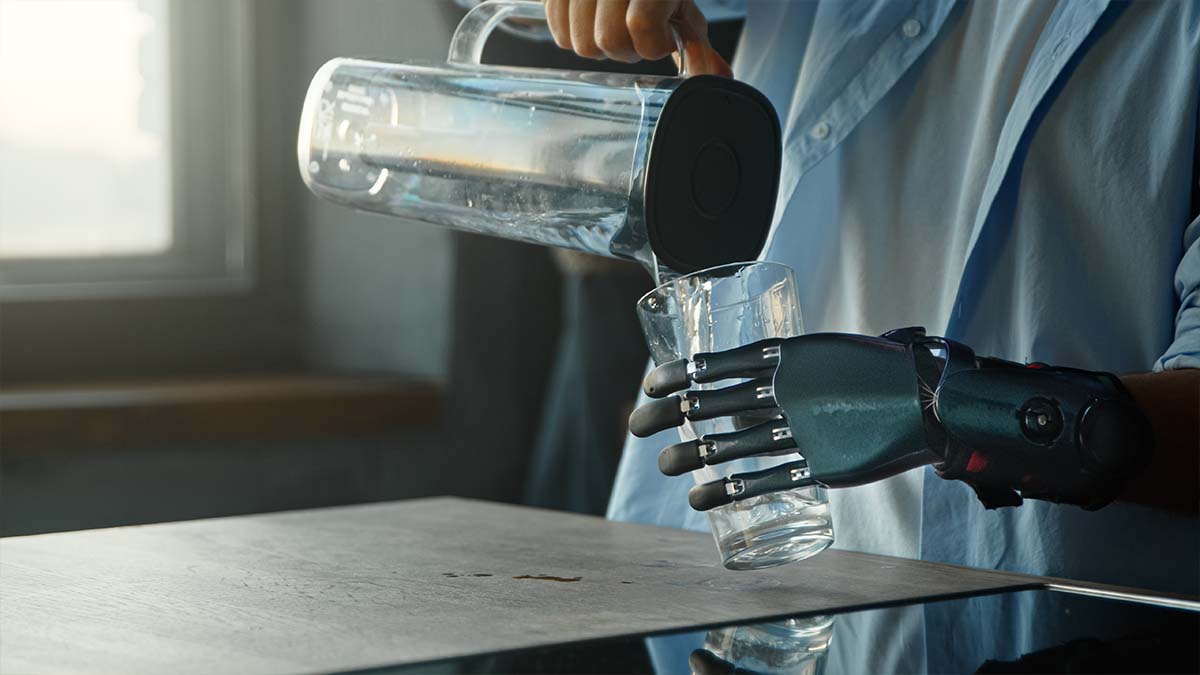

Christian Restoration vs. Human Augmentation
Human innovation is possible because of how God made us. For that reason, we must distinguish between augmentation and restoration.
02/22/22
John Stonestreet Kasey Leander

Last year, the U.K. and German ministries of defense released a joint statement entitled “Human Augmentation: the Dawn of a New Paradigm.” The statement explored the future of technology that seeks to “enhance” people beyond the limits of biology, especially for military purposes. According to the article, it’s not a question of “whether” human enhancement is in our future. It’s “when.”
CRISPR and other gene-editing tools offer the ability to genetically alter human beings, turning off harmful genetic factors and turning on helpful ones. Pharmaceuticals promise not only groundbreaking cures for mental illness, increased cognitive abilities. And, so-called “brain interfaces” promise the ability to “establish high-bandwidth data connections between brain and computer.”
“Six million years of evolution to where we are today,” the authors claim, “and now we have the tools in our hands to decide how our continued evolution should be shaped.” It’s as if they don’t even know of all the bad guys who used almost this exact language in some movie before nearly destroying the world. This time, it’s not a sci-fi character making a promise he cannot keep.
Rather, these predictions come by way of defense ministers from two major Western nations. While the authors do manage to mention ethics from time to time, it seems a secondary consideration at best. “The need to use human augmentation may ultimately be dictated by national interest,” they write; “Countries may need to develop and use human augmentation or risk surrendering influence, prosperity, and security to those who will.”
In other words, like it or not, the cat is out of the bag.
In response, bioethicist Robert Malone warned: “The arrogance and hubris in this point of view is enormous. That in one or two generations, the military industrial complex will pivot to controlling human evolution via genetic engineering and human augmentation is not only naive [and] ethically corrupt, but fundamentally dangerous.”
A helpful framework for thinking about the potential perils of this biotech future is the difference between “Class 1” and “Class 2” problems, something articulated by Wired magazine’s Kevin Kelly. Class 1 problems are when technology fails. An example would be if someone botched an attempt at genetic editing and infected the human gene pool. Class 2 problems are worse. It’s when technology works. As Gandalf put it, even the most wise cannot foresee all ends. It’s possible that technology used exactly as it was intended could bring an outcome we failed to anticipate.
To say, “it’s going to happen anyway” is not an adequate ethical framework. Any ethical consideration, especially one with such consequential potential for humanity, should begin instead with the question, what does it mean to be human?
Human innovation is possible because of how God made us. For that reason, we must distinguish between augmentation and restoration. Restoration is when an amputee gets neural implants that allows control of a prosthetic limb via thoughts. Augmentation is an army or Olympic team outfitted with exoskeletons which makes them stronger and faster.
Our bodies are given to us by God, from our gender to our hands, feet, faces, and minds. As one moral theologian said:
There are God-given limits, and if the limits are transgressed, people don’t flourish. And one of those limits is respect for our bodily nature, which implies at very least that we shouldn’t metamorphose that nature into some grandiose more-than-human reality. They [Christian scientists] hear in the transhumanist imperative a whisper of original sin, which is pride: “Do it and you’ll be like God.”
The body is sacred and bestowed with purpose by God. Secularism lacks that grounding principle entirely. If everything is the result of random, purposeless chance, then the physical “stuff” of our bodies can be shaped, molded, changed, prodded, and rearranged at our leisure or for our benefit. Other than individual or collective desires, there are no limits on what we should do. In this framework, if we can do it, we should.
According to the authors of this report, human augmentation is justified under the guise of “national interest.” It’s as if they never heard of the Second World War. Even our best intentions, however, cannot prevent bad ideas from having consequences and victims… not in sci-fi films or in real life.
Topics
Have a Follow-up Question?
Up
Next

Related Content

© Copyright 2020, All Rights Reserved.













